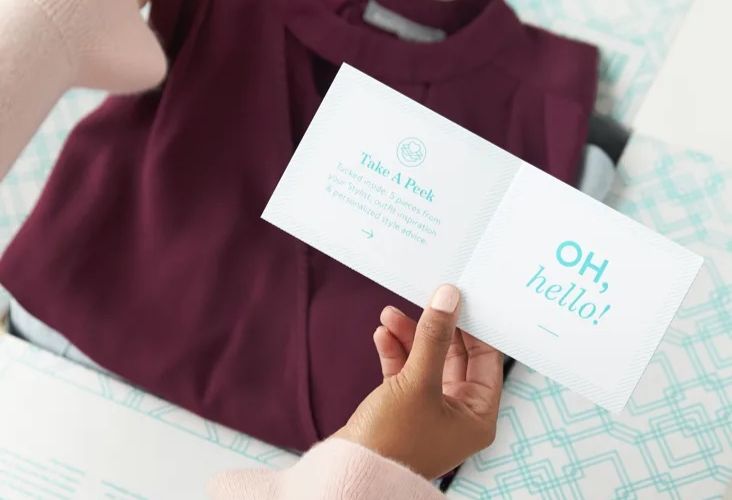Will Cook, VP of multichannel at technology provider HP Autonomy considered in a recent Internet Retailing webinar how retailers can go about using marketing optimisation to deliver a personalised customer experience that both attracts and converts new customers, while at the same time retaining the loyalty of existing shoppers.
Also speaking in the hour-long event, Marketing optimisation for online retailers, was Andrew Mackie, ecommerce manager at BGL Group.
“I think we’d all agree that if we knew our customers better we could market to them more effectively,” said Will Cook, VP, multichannel at HP Autonomy, opening a recent Internet Retailing webinar, Marketing optimisation for online retailers. But the challenge for retailers is how to get the data they need in order to gain that understanding.
Today’s consumers work across a range of devices and online resources, in both their personal and business lives. For a retailer, said Mackie, it’s not easy to piece together all the data they have collected on each individual. Taking a typical consumer, Rachel Sterling, as an example, he said: “The trick is figuring out exactly what Rachel needs, making sure she finds your site and then you serve her up a customer experience that’s meaningful, targeted, and based on everything you know about Rachel that will drive her to buy from you.”
It’s important, he said, because customers have high expectations. “Customers are in the driving seat and they expect a uniformly meaningful experience wherever they encounter your business,” he said. “As marketers we’re constantly trying to catch up or anticipate these consumer demands.”
However, most businesses have customer data, from CRM to social media and beyond, in different silos, stretched across the company. Asked in a poll how siloed their data was, 28% of the participants in the webinar said their data was siloed, 60% said they could link together some data repositories but not others and 12% said different data repositories were communicating well.
A multidimensional view
Until recently businesses aspired to a 360 degree view of the customer. Cook argues, however, that they now need to look for a multidimensional view in order to gain a competitive advantage. A reputation for great customer service, he said, attracts new customers. By delivering multidimensional experiences, businesses can also learn from the behaviour of their visitors.
Attraction
That experience starts with attracting the visitor to the store – by delivering relevant and cost-effective results for their original search through sophisticated search engine optimisation. That content should be mirrored once the visitor arrives at the site itself. All of this starts to build up the picture of the visitor. Returning to ‘Rachel’, by learning from the search journey, in which she is looking for a ‘London wedding store’, the retailer would already know her location, what site and keyword led her to their site, and the time of day at which this happened.
Engagement
At this point, the retailer has seconds to engage the visitor with the site. Rachel’s search within the wedding site she has found can start to reveal useful profile and behavioural information. The information gained so far allows the retailer to present to different visitor segments, based on their geography and their level of expertise.
Asked in a poll if they had a personalisation solution in place, 4% of webinar participants said they did, 4% were budgeted, 39% said it was on their radar, and 52% said it was interesting and they’d like to know more.
Conversion
Website optimisation learns from visitor interaction and behaviour to improve the content of the website. Tactics include A/B testing, multivariate testing, or segmentation, targeting and ultimately personalisation. But while multivariate testing is rated the most valuable of these, it is also the most difficult.
One discount airline customer wanted to encourage passengers to upgrade to priority boarding. It tested the headline, image, main copy and the placement of action buttons, using Autonomy solutions, and combined the variables into different combinations for testing. The winning creative increased the upgrade acceptance rate by 60%, equivalent to revenue of $40,600 a month.
Returning to Rachel, still browsing the wedding shop ecommerce site, she is presented with a registration form that testing has shown is more likely to be successfully completed then the other variants by visitors hailing, as she does, from London. Once complete, the form gives the information the retailer wants to learn from her in order to improve the customer experience, adding information about meaning and sentiment to further details on her profile and behaviour. “Hopefully we are beginning to see that as our view of Rachel and our understanding of her needs improves, the value of this information is starting to grow as well.”
Retention
Using a multidimensional customer view can boost retention. When speaking to a call centre, for example, information gained on the website is available to staff in the centre, giving them the insight to be able to serve the customer well. The same is true of other touchpoints.
In a case study, Cook explained how US grocer Safeway brought together the data from across its channels to improve the customer experience. He moved on to introduce the HP Marketing Performance Suite, and Autonomy, the company behind it.
Case study interview
Andrew Mackie, ecommerce manager at BGL Group
BGL Group, an HP Autonomy customer, runs a number of general insurance brands through its Frontline business, Budget and Dial Direct. Within that business, Andrew Mackie runs a team responsible for the analysis and online optimisation of customer journeys. “Most of our work,” he said, “is focused on price comparison sites, and we’ve been working with Autonomy for two and a half years now.”
It uses A/B and multivariate testing to understand, analyse and optimise journeys through the sales funnel, as well as other aspects of customer experience, such as providing insurance documents or the online customer service area.
“We’ve learned a lot in three years,” he said. “One of the big things was I would have integrated the Autonomy account managers closer into my ecommerce team. We were probably slower than we should have been to utilize the experience of those account managers. We certainly saw a big improvement once we started working more collaboratively.” Wins included selling the customer optimisation journey across the business. “That gives the business the confidence of going in the right direction and everyone is involved in our progress,” said Mackie.
What is the most important thing to do when it comes to website optimisation? Keep tests well-thought out relevant in order to gain the most benefit, said Mackie, adding: “Be prepared that some tests won’t work – and manage that expectation with stakeholders up front.” He added: “Our tests are aligned closely with our KPI reporting, and that’s worked really well.” The team now has quarterly meetings to design tests that will be relevant to its KPIs and boost its business.
The following question and answer session covered questions ranging from HP Autonomy’s case study on Nikon to the skill sets required in order to deliver optimisation projects, to the difficulty of combining creative design with optimisation.
To hear the webinar for yourself, to view the accompanying slides and hear the question and answer session in full, visit the HP Autonomy webinar page. For details of our other webinars visit our webinars page.






